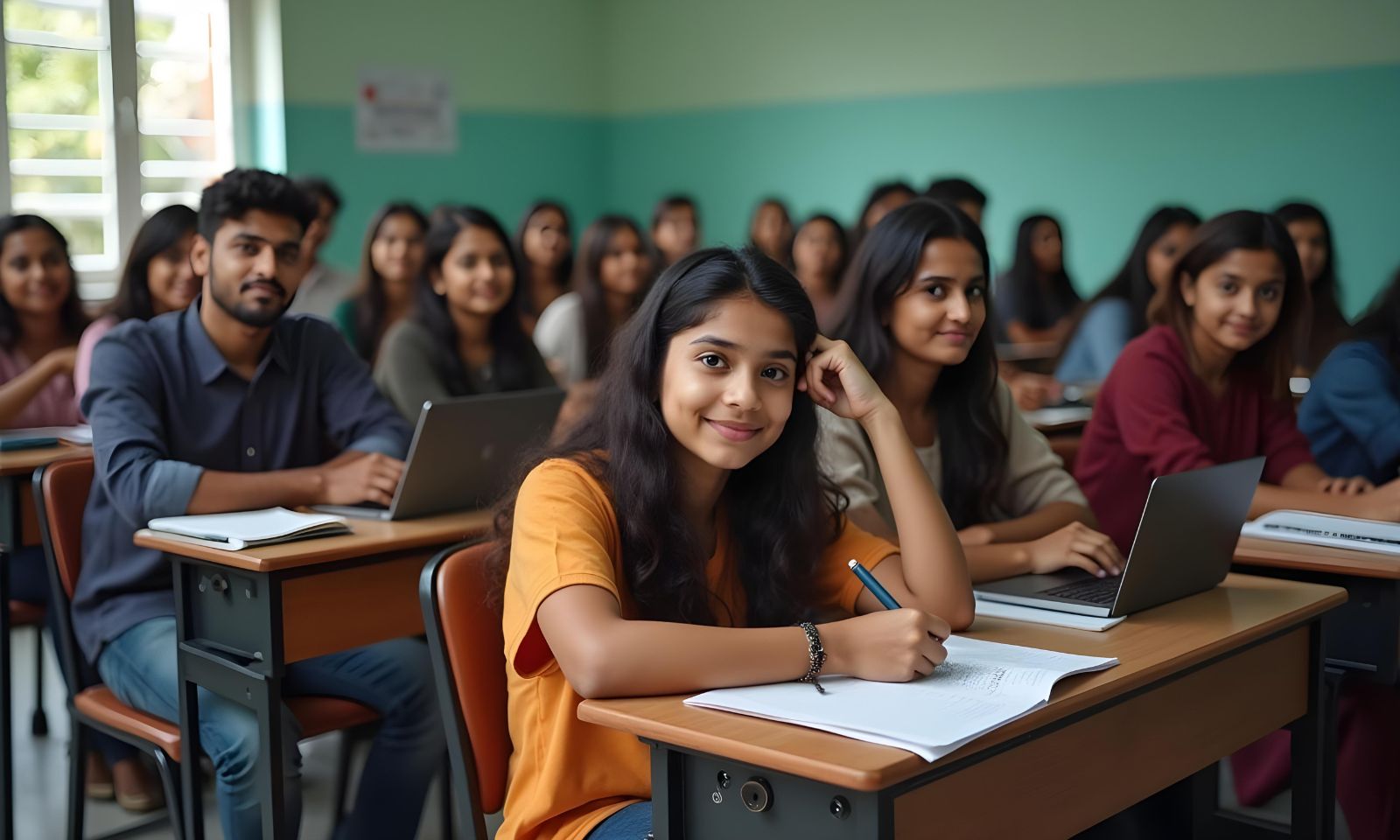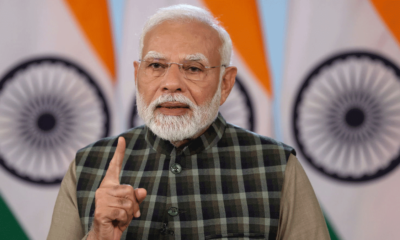Edu
Delhi’s Scholarship for Dalit Students: What You Need to Know
Delhi government offers full scholarships for Dalit students to study abroad, providing tuition, travel, and living expenses to pursue higher education.

In a historic move to improve social equality and educational opportunities, Delhi Chief Minister Arvind Kejriwal announced a new Delhi government scholarship program to support Dalit students pursuing global education. This ambitious initiative aims to remove financial barriers and offer deserving students the chance to study abroad at renowned international universities.
“A Step Toward Equal Education”
This scholarship program, introduced at a recent press conference, highlights the Delhi government’s commitment to breaking down barriers that have long limited access to quality education for marginalized communities.
By covering the full cost of education, travel, and living expenses, this initiative ensures that students can focus solely on their academic goals without the burden of financial worries. It is a significant step toward education equality.
“Education is the key to empowerment, and this program is a step toward creating equal opportunities for all,” said Chief Minister Kejriwal.
“Comprehensive Financial Coverage”
This Delhi government scholarship is different from many other schemes because it covers all expenses associated with studying abroad.
This includes tuition fees, travel costs, accommodation, and other necessary expenses. This all-encompassing support ensures that economic difficulties do not prevent talented Dalit students from accessing opportunities at top global institutions. By removing financial obstacles, this study abroad funding ensures that deserving students can achieve their academic dreams without worry.
“Clear and Fair Selection Process”
The scholarship program focuses on academic excellence and a strong dedication to the chosen field of study.
To apply, candidates must be from the Dalit community and meet the admission requirements of their chosen foreign universities. The Delhi government has promised a fair and transparent selection process to ensure that the best candidates are chosen, reinforcing the commitment to education equality.
“Long-Term Impact on Society”
The impact of this scholarship goes beyond the students who benefit from it.
By giving Dalit students access to world-class higher education, the Delhi government is preparing future leaders who can bring valuable knowledge and innovation back to India. These students will inspire others in their communities, helping to break cycles of poverty and exclusion. This initiative encourages the growth of global citizens who will contribute to India’s development and lead by example.
“Public Support and Future Challenges”
This initiative has been widely praised for its vision and scope.
However, experts stress the importance of effective implementation. Ensuring a fair selection process and offering support such as pre-departure training, cultural orientation, and mentorship will be key to the program’s success. These factors will ensure that the program provides lasting support to Dalit students seeking to study abroad.
“A Model for Other States”
Delhi’s scholarship program sets a powerful example for other states to follow.
It shows the transformative potential of inclusive education policies and reinforces the idea that equal access to opportunities is essential for building a fair and progressive society. The Delhi government scholarship will hopefully inspire other regions to launch similar programs to support underrepresented students.
Watch and Subscribe to the YouTube Channel: EBT Entrepreneur Business Times

Edu
JEE Main 2025: Top Strategies for Success You Need to Know
Prepare for JEE Main 2025 with top strategies like the elimination technique to improve accuracy and time management.

The JEE Main 2025 is fast approaching, and students across India are preparing for this crucial engineering exam, which plays a key role in gaining admission to prestigious engineering colleges like the Indian Institutes of Technology (IITs) and National Institutes of Technology (NITs). As the JEE exam date draws near, experts stress the importance of honing effective strategies to boost performance. One of the best strategies is the elimination technique.
JEE Main includes multiple-choice questions (MCQs) on subjects like Physics, Chemistry, and Mathematics. Many students struggle to identify the correct answer because the options may seem very similar. This is where the elimination strategy can give them an edge.
“What Is the Elimination Technique?”
The elimination technique is both simple and effective. Instead of focusing only on identifying the right answer, students should start by removing the wrong choices.
By crossing out incorrect options, they increase their chances of selecting the right answer, even when unsure.
For instance, when faced with a difficult question during JEE preparation, students should carefully analyze each option. Often, one or more choices can be immediately ruled out based on basic knowledge. By eliminating these incorrect options, students narrow down the remaining answers, making it easier to choose the correct one.
“How Elimination Helps Improve Accuracy”
Time management is essential in exams like JEE Main, where students must answer many questions in a limited amount of time.
The elimination technique helps students save time by reducing the number of options they need to consider. With fewer choices, they can focus better and make more informed decisions. If they are still unsure, eliminating incorrect answers gives them a better chance of guessing the right one.
Additionally, the elimination technique encourages students to think logically, instead of relying solely on memorized formulas or facts. This helps them apply their knowledge more effectively, leading to greater accuracy in their answers.
“JEE Exam Tips to Master the Elimination Strategy”
- Practice Regularly: To master the elimination technique, students should practice with past years’ papers and mock tests. This will help them quickly spot and rule out incorrect options.
- Focus on Key Concepts: A strong understanding of fundamental concepts makes it easier to identify irrelevant choices. Mastering these basics is crucial for success in JEE preparation.
- Stay Calm and Focused: Exam pressure can cloud judgment. Practicing elimination regularly can help students remain calm and methodical, even under stress.
- Avoid Random Guessing: While the elimination technique improves the chances of a correct guess, students should avoid making random guesses. Logical reasoning should guide their decisions.
Conclusion
As JEE Main 2025 approaches, students should fine-tune their exam strategies. The elimination technique is a proven way to enhance accuracy and manage time effectively during the exam. By practicing this strategy, students can significantly increase their chances of success. With a solid understanding of the syllabus and the elimination technique in their arsenal, they will be well-prepared to face the challenges of JEE Main 2025 with confidence.
Watch and Subscribe to the YouTube Channel: EBT Entrepreneur Business Times
Edu
India’s School Enrollment Decline: What You Need to Know
India’s education system is seeing a worrying decline in school enrollment, especially in primary education. This trend threatens the future of millions of children across the country.

India’s education system is currently facing a major setback. According to reports, 37 lakh fewer students are enrolled in schools for the 2023-24 academic year compared to the previous year. This brings the total enrollment down to 24.8 crore. The decline in enrollment has raised alarms among educators, policymakers, and parents about the future of education in India and its impact on the country’s long-term development. The school enrollment decline has highlighted a growing education crisis in India.
“A Deepening Crisis in School Enrollment”
The drop in enrollment is not just a statistic—
it highlights a growing crisis. India has one of the largest student populations in the world, and this decline, particularly in primary education in India, is a cause for concern. Early education is the foundation for a child’s academic growth. If students miss out on primary education, it can lead to long-term challenges in their future education and opportunities. The education challenges in rural areas are particularly concerning, as access to quality education becomes increasingly difficult for children in these regions.
The primary education sector has seen the most significant drop in student numbers. This trend is alarming as it means that future generations may lack the necessary skills to succeed in a rapidly changing world. This reduction in enrollment is affecting the foundation of India’s education system, making it harder to address the education crisis in India.
“Key Factors Behind the Enrollment Decline”
Several factors have contributed to the school enrollment decline across India.
The COVID-19 impact on schools is one of the major reasons. Although schools have reopened, many students, especially in rural areas, have not returned. The financial pressures caused by the pandemic have forced families to prioritize work over education, particularly for girls and children from low-income backgrounds. As a result, many children from disadvantaged areas remain out of school.
In addition to economic difficulties, poor school infrastructure has also played a role. Many schools in rural areas lack basic facilities such as clean sanitation, qualified teachers, and digital resources, making them less appealing to parents and students. In some remote regions, the absence of school buildings and transportation options has made it difficult for children to attend school, contributing to higher dropout rates. This lack of access highlights the growing education challenges in rural areas.
Social factors, such as early marriages and child labor, especially in rural areas, further prevent many children from attending school. These barriers are contributing to the overall decline in school enrollment. It is crucial to address these challenges to reverse the trend.
“Government Efforts and Ongoing Challenges”
In response to these challenges, the Indian government has introduced several initiatives.
The Right to Education India (RTE) Act guarantees free and compulsory education for children aged 6 to 14. Despite this, the implementation of the RTE Act remains a challenge, especially in rural areas where school infrastructure is insufficient. Many children in remote areas are still unable to access basic education due to the lack of facilities and resources.
The government has also launched programs such as the National Mission for Education through Information and Communication Technology (NMEICT), which aims to bridge the education gap by providing digital learning platforms. However, the success of these initiatives depends on adequate resources and the willingness of local communities to embrace digital education. These efforts are essential but must be expanded to reach every child, especially in rural areas facing the greatest barriers.
“Moving Forward: “
A Call for Collective Action
The decline in school enrollment is a wake-up call for India’s education system. To address this crisis, the government, civil society, and the private sector needs to work together. Key priorities should include improving school infrastructure, expanding access to education, and tackling socio-economic barriers that prevent children from enrolling in school.
Programs like mid-day meal schemes, community engagement, and the expansion of digital learning must be scaled up to ensure every child has the opportunity to receive an education. Education is vital to India’s future, and ensuring that every child is enrolled in school is the first step toward building a more equitable and prosperous future for all. By tackling the education crisis in India head-on, the country can foster an environment where every child, regardless of their socio-economic background, has access to quality education.
The road ahead may be challenging, but with a unified approach and ongoing effort, India can overcome this school enrollment decline and create a stronger, more sustainable education system for future generations. It is crucial to address the root causes of this decline to ensure that all children in India have access to the education they deserve.
Watch and Subscribe to the YouTube Channel: EBT Entrepreneur Business Times
Edu
India’s Universities Break Into Top 100: What You Need to Know
India’s top universities, including IITs and IISc, are making strides in global rankings, showing the growing quality and impact of Indian higher education.

India’s leading universities, including the Indian Institutes of Technology (IITs), National Institutes of Technology (NITs), and other prestigious institutions, are making significant strides on the global stage. Many are now nearing the top 100 in international university rankings, reflecting the growing quality and influence of higher education in India. This improvement is driven by advancements in infrastructure, a focus on research and innovation, and increasing global partnerships.
“Indian Universities See Significant Growth in Global Rankings”
Over recent years, Indian universities have steadily climbed global rankings.
Institutions like IIT Bombay, IIT Delhi, IIT Kanpur, and the Indian Institute of Science (IISc) have made remarkable progress, with IIT Bombay recently breaking into the top 100. These achievements showcase the universities’ commitment to improving academic standards, increasing research output, and expanding their global influence.
The progress reflects more than just higher rankings. It highlights a dedicated focus on delivering top-tier education, fostering innovation, and addressing global challenges. As a result, Indian universities are attracting students and faculty from around the world.
“Research and Innovation Power India’s Success”
A key factor behind the rise of Indian universities in global rankings is their growing focus on research and innovation.
Institutions like the IITs and IISc have increased their research output, publishing extensively in top international journals. This has enhanced their reputation globally, particularly in fields such as artificial intelligence, machine learning, and sustainable engineering.
For instance, IIT Bombay has made significant advances in artificial intelligence and sustainable technologies, earning more recognition through increased citations of its work. As global rankings increasingly prioritize research impact, Indian universities are seeing the results of their efforts, steadily rising in global education indices.
“Global Collaborations Strengthen Indian Universities”
International partnerships play a crucial role in boosting Indian universities’ global standings.
Through joint research projects, faculty exchange programs, and student internships, IITs, NITs, and other institutions have built valuable relationships with world-leading universities such as Harvard, MIT, Stanford, and Oxford. These collaborations elevate the reputation of Indian universities while providing students with diverse academic and cultural experiences.
By fostering a global exchange of knowledge, these partnerships further strengthen India’s position in global education and enhance its academic reach.
“Focus on Quality Education and Skill Development”
In addition to academic excellence, Indian universities are emphasizing quality education and skill development. The National Institutional Ranking Framework (NIRF) evaluates universities based on various factors, including teaching quality, resources, and research output, ensuring alignment with global standards.
The National Education Policy (NEP) 2020 has also paved the way for significant reforms aimed at enhancing the quality of higher education in India and promoting internationalization. These reforms are expected to attract more international students and faculty to Indian institutions, further boosting India’s rankings in the global educational arena.
Conclusion: India’s Growing Influence in Global Higher Education: The steady improvement of IITs, NITs, and other Indian universities in global rankings signals a new chapter for India in higher education. These institutions are not only producing skilled graduates but also contributing groundbreaking research that tackles global challenges. With ongoing improvements in academic standards, a strong focus on international partnerships, and a commitment to innovation, India is poised to become a leading force in global higher education. As Indian universities continue to strengthen their academic reputation and research impact, they are set to play a central role in shaping the future of global education.
Watch and Subscribe to the YouTube Channel: EBT Entrepreneur Business Times
-

 Cover Story2 weeks ago
Cover Story2 weeks agoDonald Trump’s Key Policies: Essential Insights You Need to Know
-

 Cover Story2 weeks ago
Cover Story2 weeks agoMaha Kumbh Mela 2025: Essential Insights You Need to Know
-

 Cover Story2 weeks ago
Cover Story2 weeks agoNarendra Modi’s Leadership and Vision for India’s Future: What You Need to Know
-

 Business2 weeks ago
Business2 weeks agoWomen Entrepreneurs’ Impact on Business Growth: What You Need to Know
-

 Pharma1 month ago
Pharma1 month agoIndia’s Pharma Industry Transformation: What You Need to Know
-

 EV1 month ago
EV1 month agoIndia’s New EV Charging Guidelines: Essential Insights You Need to Know
-

 Auto1 month ago
Auto1 month agoOsamu Suzuki’s Impact on India’s Automotive Industry: What You Need to Know
-

 Pharma1 month ago
Pharma1 month agoIndia’s Pharmaceutical Growth: What You Need to Know









